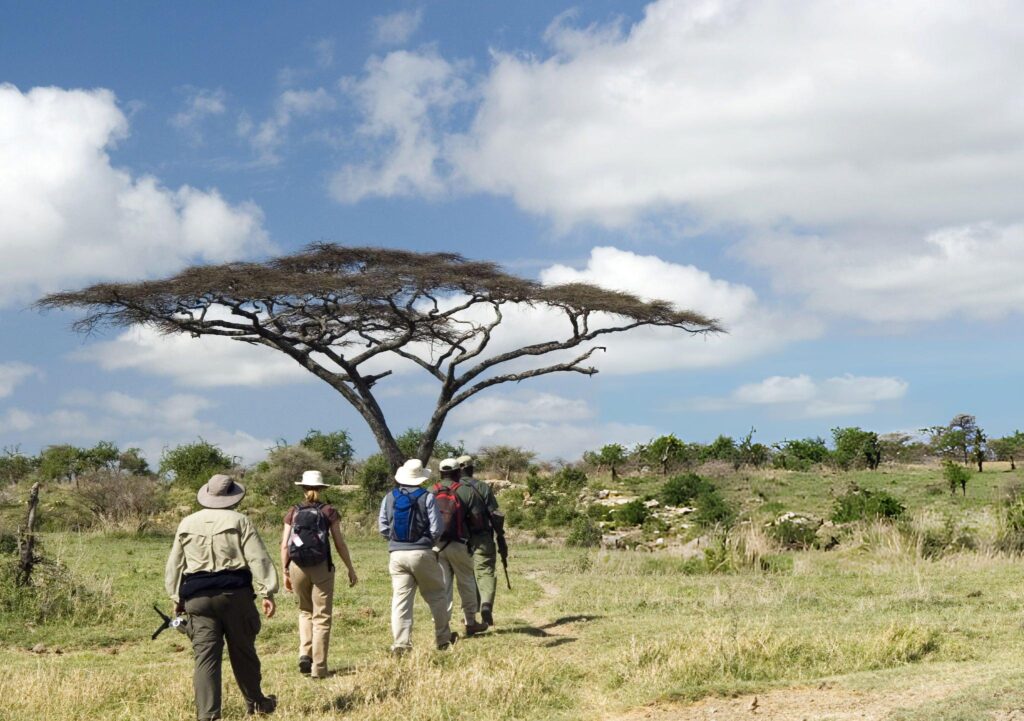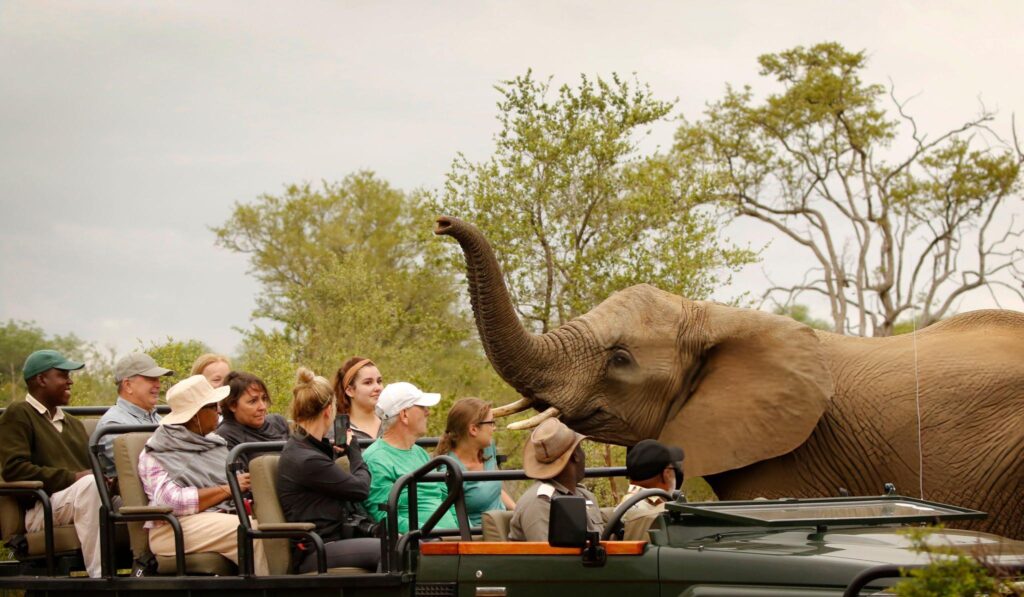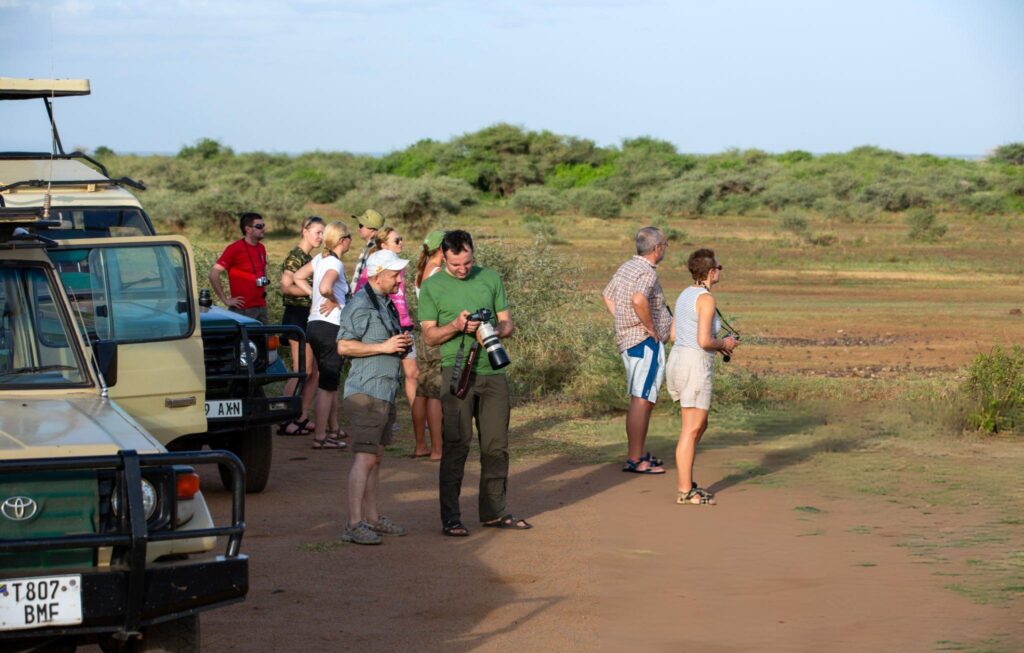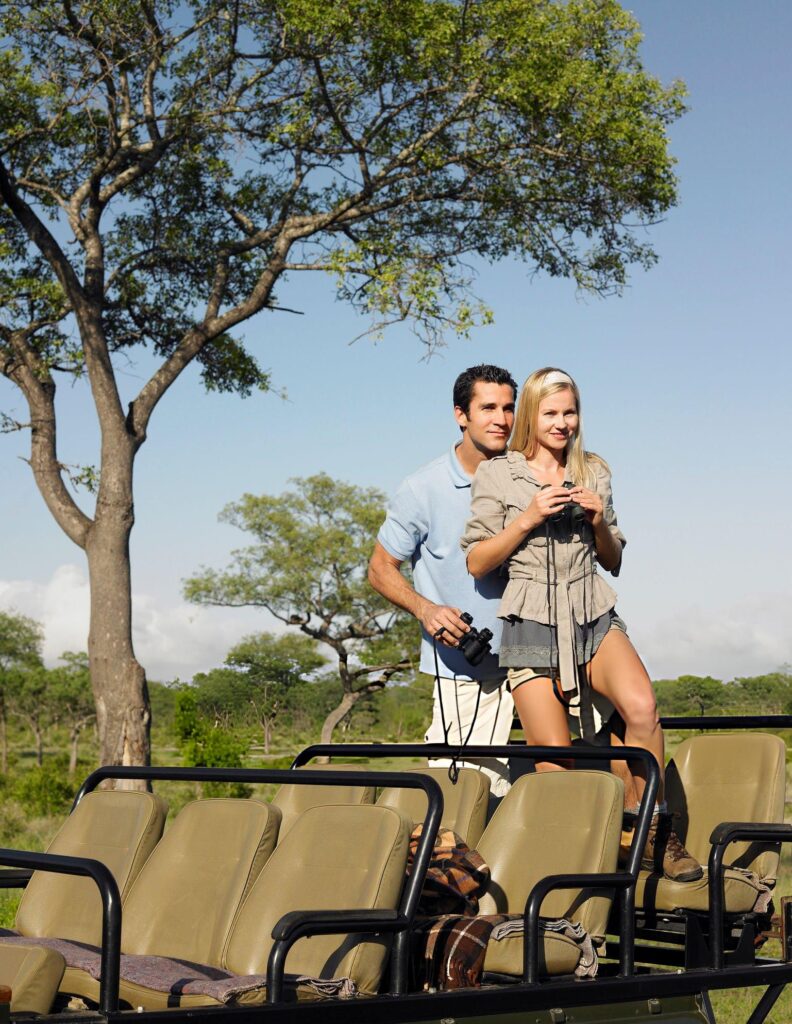What do you think of first when you think of an African safari? Sitting high up in a 4×4 with a camera in hand and watching elephants from a distance? Or walking quietly through the bush and feeling the ground beneath your feet while a giraffe watches you from a distance?
Well, both experiences are magical, but they offer something completely different.
Game drives keep you safe and comfortable in a car, while walking safaris bring you closer to nature so you can see, hear, and feel the wild in its purest form.
But here’s the question that most travellers want to know: which one is safer and which one feels more real? The answer isn’t as simple as you might think. Each one has its own rhythm, beauty, and level of adventure.
Let’s explore the real differences between game drives and walking safaris so you can choose the type of safari that interests you the most.
Walking Safaris vs Game Drives
Walking Safari

A walking safari is when you walk through the wilderness with a small group and an experienced guide or tracker. You will often look at footprints, animal signs, smaller animals, and bush trails, getting closer to the habitat instead of just looking at it from a car.
READ ALSO: 100 Best African Safaris to Experience Once in Your Lifetime
Game Drive

A game drive is the classic safari picture: a 4×4 vehicle (often with an open top or sides) drives through a park or reserve, and a guide tells you where to look for animals. It usually covers more ground and lets you see bigger animals more easily.
Safety: Which is Safer?

Let’s talk about safety, since “safe” is a big concern, especially as we get older and want to travel smart.
Game Drives: Safety Strengths
- Vehicles provide a physical barrier between you and wildlife; you are elevated and protected.
- Guides are trained and vehicles often have radios, emergency protocols and are in terrain suited for motorised travel.
- Because you cover more ground, you can avoid being in close proximity to dangerous animals for long stretches.
Walking Safaris: Safety Realities
- On foot means you are exposed. The guide must be highly experienced, alert, and often armed (depending on location) for very rare eventualities.
- The terrain might be harder: the ground might be uneven, you might have to walk in the hot sun, and you’ll have to trust your guide’s judgement a lot. One site says, “If you’re going to an area with big game on foot, walking safaris will never be risk-free.”
- You might be in more danger if you accidentally enter an animal’s comfort zone because you’re moving more slowly and paying more attention. But that risk goes down when walks are well-planned.
So, Which is Safer?
If I had to sum it up as a seasoned traveller, I’d say that game drives are usually safer for first-time safari visitors, people who are worried about getting around, or people who want to be comfortable and have less risk.
Walking safaris can be very safe, but only if they are led by experienced guides in the right place. They also require more personal preparation.
READ ALSO: 6 Epic African Safari Tours for Adventure Junkies
Authenticity: Which Feels More “Wild”?

Now let’s talk about the “wow” factor, the feeling of authenticity that is the heart of the safari.
Game Drives: Authentic, but More “Viewed”
- You’re still in nature, so you might see big animals and famous places. That’s authentic in its own right.
- But you’re not really in the bush; you’re watching from the car, not moving with it. According to Tanzania Adventures, game drives let you cover a lot of ground and see many animals quickly.
- Game drives are great for photography, seeing big game, and going at a slow pace.
Walking Safaris: Deeply Immersive
- Walking lets you feel the ground beneath your boots, hear the bush, smell it, and notice the subtle tracks. You’re not just watching the ecosystem; you’re in it.
- You will probably see smaller animals, tracks, plants, and bugs, things that are harder to see from a car.
- Walking safaris tend to feel more authentic for those who want to connect with the land, not just view animals
READ ALSO: Night Safaris in Uganda: What Really Happens After Dark
Which Should You Choose?
Here are some practical tips.
Choose Game Drive If:
- You want maximum wildlife sightings, especially of big animals.
- You might want comfort and less physical strain, especially if you have trouble moving around.
- It’s your first safari and you prefer a more “classic” experience.
- Time is limited and you want to cover ground efficiently.
Choose Walking Safari If:
- You’re comfortable walking, have good fitness or are willing to moderate your pace.
- You want to feel the bush, not just view it. You have a curiosity for details, ecosystem, tracks, and bushcraft.
- You’ve done game drives before and seek something different, deeper.
- You’re fine with fewer big sightings but richer, slower engagement.
Combine Both, My Strongest Recommendation
I strongly suggest doing both if you have time in your schedule. The mix of driving and walking gives you the excitement of being around big animals and the closeness of being in the wild.
A lot of lodges these days offer a morning game drive and an afternoon walk (or the other way around), so you can do both.
Some Practical Things to Think About (and Some Warnings)
- Health and fitness: Walking safaris require you to stand for long periods of time, walk on uneven ground, and sometimes in the heat. A game drive might be better for you if you have heart problems, or just want to do less work.
- Guide quality: This is crucial. A walking safari is only as safe as the guide and his/her tracker’s experience. Choose operators with excellent reviews, standards, and low group sizes.
- Environment & wildlife: In some parks, the walking option may be limited or more regulated (e.g., only in private reserves). Game drives are available almost everywhere.
- Expectations: On a walking safari you might not see the big five up close, or you might not cover huge ground. On a game drive you might rush from sighting to sighting without the slower sensory experience.
- Mobility/comfort: If you value comfort, safety and a little pampering, go on game drives, e.g., smooth 4×4 rides, sitting rather than walking.
- Authenticity vs. safety trade-off: Walking is more immersive, but it comes with a little more risk (though it can still be managed) than driving. It’s all about being ready and pushing your limits.
Final Thoughts
If you are not sure whether to choose game drives or walking safari, I’d say go for the style that aligns with you today.
If your heart says, “I want to feel the bush, walk under acacia trees, and feel like I’m part of the wild,” then choose a reputable operator for your walking safari.
But if your heart says, “I want to see lions and elephants, maybe do this once and make it count, and I want comfort,” then choose the game drive.
And if you can do both, do. Because the land is rich, and the two experiences go well together. Afterall, travel isn’t just about seeing things; it’s also about being there, being connected, and being moved.
No matter what you choose, be safe, ask about the guide’s qualifications, pay attention to your body, and respect the land and animals. And I hope that soon you’ll be out there, boots (or safari shoes) on the ground or in a 4×4, feeling the wild flow through you.







